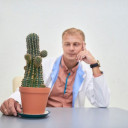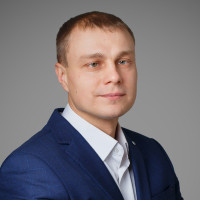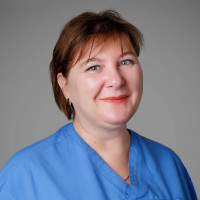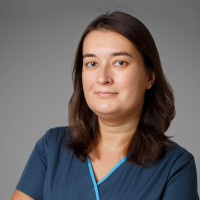STD treatment
What are STDs
The abbreviation STD (STI) stands for sexually transmitted diseases (infections). In the overwhelming majority of cases, infection with them occurs through sexual contact. The rapid spread of sexually transmitted diseases (STDs) is fueled by the expansion of international tourism. But sexually transmitted infections can be transmitted not only through sexual contact, but from mother to child, through blood transfusion, etc.
Traditionally, sexually transmitted diseases are:
- gonorrhea,
- syphilis,
- venereal granuloma (donovanosis),
- lymphogranuloma venereum (Nicholas-Favre disease),
- chancre,
- chlamydia,
- ureaplasmosis,
- staphylococcus,
- streptococcus,
- enterococcus,
- mycoplasmosis,
- trichomoniasis,
- HPV - Human Papillomavirus.
Who should be treated for STDs?
The following symptoms are the reason for an immediate visit to a venereologist:
• feeling of cramps, burning, pain, itching in the urethra;
• the appearance of pathological discharge from the genitourinary tract;
• rashes in the genital area and on the trunk;
• swollen lymph nodes;
• swelling and swelling in the perineal region;
• unusual discharge from the urethra (in men);
• painful urination;
• painful sensations in the lower abdomen;
• vesicles, wounds and ulcers in the anogenital area.
Some signs of STIs can also indicate the presence of a sexually transmitted disease:
• ulcerative lesions of the oral mucosa and skin around the mouth,
• soreness during sexual intercourse,
• inflammation of the inguinal lymph nodes,
• warty formations and ulceration in the perineum and anus, etc.
If you find at least one of these symptoms, then you should immediately seek help from specialists.
How STDs are treated
STI diagnostics includes information collection, examination, laboratory research methods. Anamnesis collection and examination are carried out in complete confidentiality. An anamnesis of the patient's sexual life can serve as an irreplaceable source of information.
Diagnostic procedures are widely used to identify and treat STDs (STIs): ultrasound, colposcopy, cystoscopy, urethroscopy. Timely access to a doctor and competently prescribed treatment of sexually transmitted infections (STIs) will help to avoid complications and relapses of the disease, and will significantly reduce the cure time.
Gynecology, dermatology and urology are related fields of medicine with venereology, and in turn are also involved in the diagnosis and treatment of STIs.
Laboratory methods for diagnosing STIs:
general blood analysis;
general urine analysis;
microscopic examination of stained or native preparations;
cultural research (bacteriological culture);
cytoscopic methods;
immunofluorescence study;
linked immunosorbent assay;
immunoperoxidase methods;
latexagglutination;
PARD analysis.
The main treatment for STIs is antibiotic therapy.
Bacterial STIs can be treated with antibiotics. During treatment, do not have sex until symptoms disappear, or use a condom to reduce the risk of infection to another person.
Some viral STIs do not respond to treatment, but their symptoms can be treated. You need to rest more and your doctor will prescribe medication if necessary.
Benefits of STD Treatment
Sexually transmitted diseases are a serious social and psychological problem. But you cannot condemn a person for being sick. There are no “shameful” diseases. Numerous factors contribute to the growth in the number of people with STDs. Therefore, measures aimed at preventing sexually transmitted infections should be comprehensive.
STI Prevention:
- vaccination against STIs;
- rejection of bad habits and addictions (alcohol, drugs);
- rejection of casual sex;
- selection of one permanent sexual partner;
- use of barrier contraceptives;
- timely screening for STIs.
If you do not treat STDs (STIs), then this can lead to irreversible factors:
- infertility;
- development of chronic inflammation of the genitourinary system;
- sexual dysfunction;
- the occurrence of malignant neoplasms.
Most of the sexually transmitted diseases are often asymptomatic. Therefore, it is so important to periodically undergo medical examinations and take tests.
Instrumentation and equipment
The doctor will use a variety of medical equipment to check for STDs. Also, you need to go through various tests (we wrote about them in more detail above). Further, depending on the disease and the stage of neglect, the doctor will individually select the method of treatment and prevention.
The result of STD treatment
As a result of treatment for STDs, you will get rid of annoying disease and complicating infections. Of course, we are not talking about all diseases, but only about those that are treatable. As a result of diagnostics and prevention, incurable diseases of STDs can make your life incredibly easier and will remind you less of yourself. The main thing is to take care of yourself and undergo preventive examinations every year.
Postoperative and recovery periods
Depending on the presence of a specific STD and the prescribed treatment by the doctor, the recovery period can vary greatly in its duration and intensity. The recovery period also consists in monitoring the patient's condition. For this, tests are regularly prescribed to monitor the course of treatment. Also, depending on the disease, examination by other specialists, additional diagnostic methods may be required. If complications are found during the examination, then the recovery period may be delayed.
Questions
What is the incubation period for STDs?
The incubation period is the period of time when the virus entered the human body, and during which period it began to manifest itself as pronounced symptoms. It is worth remembering that each disease has its own incubation period. With a good immune system, the patient can feel satisfactory for several months. Since you cannot immediately suspect a disease, the virus gradually infects the body, and can bring serious health problems.
Important! The length of the incubation period depends on many factors, for example, on the state of a person's immunity and his standard of living. Syphilis and HIV manifest themselves as early as six months after infection.
What methods of prevention are there?
If you have had contact with a non-permanent (casual) sexual partner without a condom, as well as in the event of a break in a condom, contact under the influence of alcohol or drugs, or rape, you should definitely contact a doctor. One of the methods of prevention is drug prevention - this is an extreme (backup) method of preventing sexually transmitted diseases. It cannot be done frequently and cannot be considered an alternative to the condom. In addition, such prevention does not prevent the development of viral diseases. It is effective only against bacterial venereal diseases.
Also, one of the methods of prevention, you can convince your casual sexual partner to come to an appointment with a venereologist and be examined for sexually transmitted infections.
Indications
The presence of gonorrhea, syphilis, venereal granuloma (donovanosis), lymphogranuloma venereum (Nicholas-Favre disease), chancre, chlamydia, ureaplasmosis, staphylococcus, streptococcus, enterococcus, mycoplasmosis, trichomoniasis, papillomavirus and other human papillomavirus infections and infections.
Result
Full or partial (for incurable) treatment of STDs. Before treatment: huge damage to the body due to STDs and its consequences. After treatment: getting rid of STDs or prevention
Advantages of method
It is better to treat STDs than to start and deal with the existing complications. Sometimes even irreversible.
Can be combined with
With the treatment of concomitant diseases or diseases that have arisen against the background of STDs.
Instruments and equipments
Depending on the specific STD and the method chosen by the doctor, a wide variety of equipment and instruments can be used.
Duration of treatment
Return to activity
Hospital - from 1 day. Return to active activity - from 1 week. Full recovery - from several months to several years.
Prices
| Услуга | Цена, грн |
|---|---|
| Prescribing an STD treatment regimen I category | 1 400 |
| Prescribing an STD treatment regimen II category | 2 100 |



